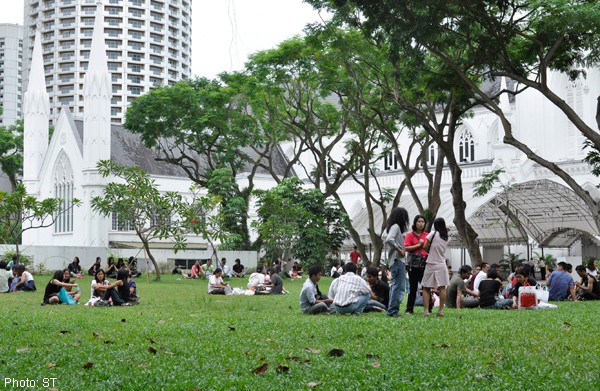It's been a hot, hot June

If you think this month has felt warmer than usual - especially at night - you are not mistaken.
The highest and lowest temperatures over the last fortnight have mostly been above the long-term average highs and lows for the month of June, according to figures from the Meteorological Service Singapore (MSS).
On all but one day between June 9 and 23, the maximum temperature recorded at the Changi climate station exceeded the long-term average high of 31.3 deg C. On 11 of the last 15 days, the minimum temperature exceeded the long-term average low of 24.8 deg C.
"For June 2014 to date, the average daily minimum temperature is well above the long-term average," said an MSS spokesman. The average daily low for this month to date is 26.3 deg C.
At night, the mercury has also hovered above the range of normal night-time lows for June, which usually lie between 23.2 deg C and 26.3 deg C. The minimum night-time temperature reached 28.3 deg C over the past weekend.
Weather researcher Winston Chow of the National University of Singapore's geography department said these were "unusual" temperatures.
"They're consistent with the above-average temperatures that we've been seeing around most parts of Asia for the past two to three months," he said. "It could be just a fluke of weather."
He refused to blame the El Nino weather phenomenon, which is predicted to occur later this year, and called for more research to be done to explain the spike in temperatures.
He added that residents in built-up areas will be more likely to feel the heat, which may not have been reflected in the Changi measurements.
The Changi climate station, which must adhere to international meteorological-station standards, is in a vegetated area.
However, urban areas trap more heat and thus register higher temperatures, Prof Chow explained.
And it's not only Singapore that is experiencing hot weather. Elsewhere in Asia in countries such as China, Malaysia and Thailand, temperatures too have been rising. Not only that, these countries which supply fruit to Singapore have also been hit by dry weather affecting fruit harvests.
As a result, the overall prices of fresh fruit and fruit products have gone up by 8.4 per cent last month over the same month last year, the biggest hike out of all the food items measured by the Department of Statistics here.
For fresh fruit, it surveyed the prices of tropical fruits such as papayas, bananas, pineapples and coconuts as well as non-tropical ones like oranges, apples and pears, in its monthly consumer price index released on June 23.
For example, the wholesale price of an 8kg crate of fragrant pears was about $20 in May last year. It now costs about $30; the wholesale price of a crate of 125 Fuji apples doubled to about $40 last month from a year before.
Other factors that might have contributed to the price jump include the costs of freight and a shortage in supply for some fruits between seasons, said Mr Desmond Lee, director of fruit and vegetable supplier Fresh Direct.
He explained: "Weather patterns have changed. Sometimes there are supply gaps when the season in one country ends before another starts. This did not happen so much a decade ago.
"The weather has also shortened the shelf life of certain produce leading to higher wastage which means higher costs."

Get a copy of tabla! for more stories.